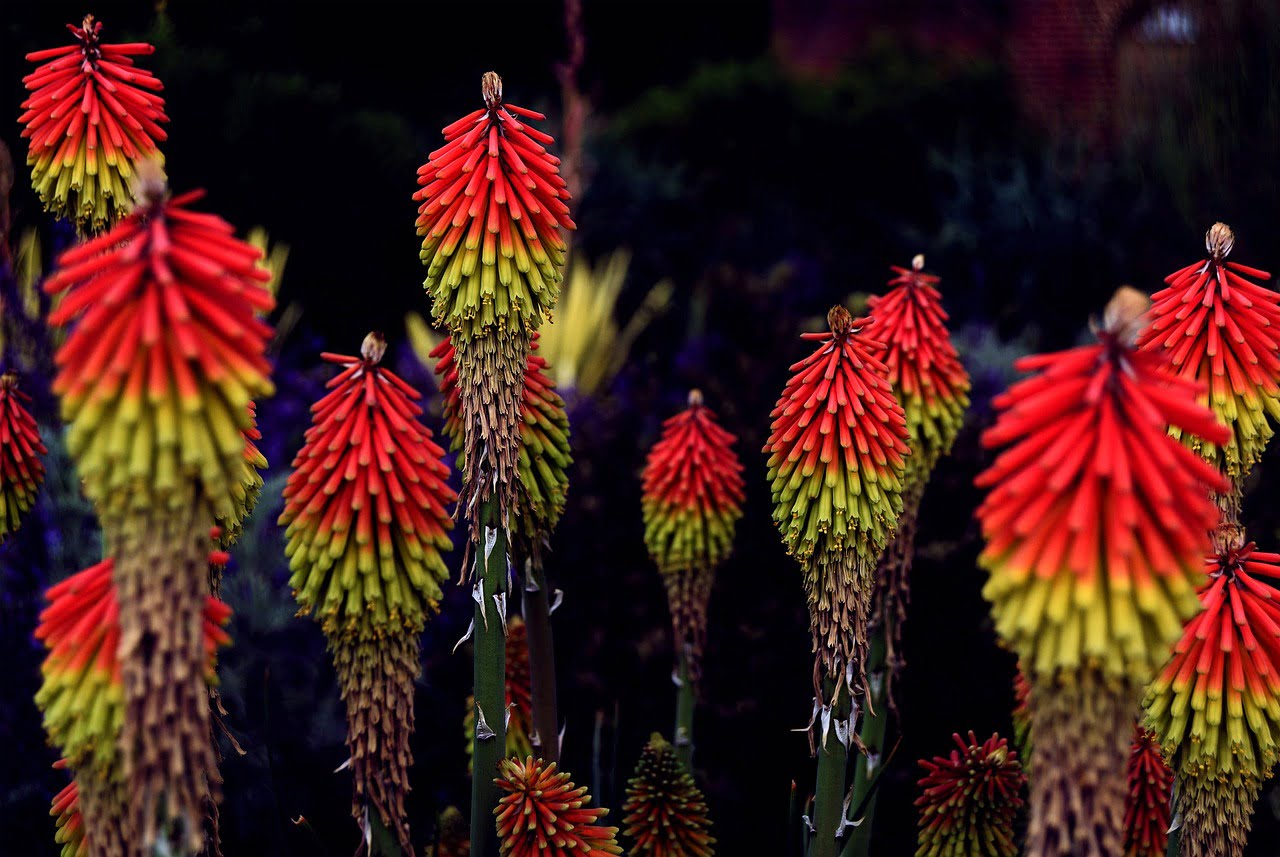
Kniphofia and Planting: A Guide to Growing Red-Hot Pokers
Introduction
Gardening enthusiasts often seek to add vibrant and exotic plants to their landscapes, and one such plant that can bring a burst of color and uniqueness to your garden is the Kniphofia, commonly known as the Red-Hot Poker. In this comprehensive guide, we’ll explore everything you need to know about Kniphofia and how to successfully plant and care for these fiery beauties.
What is Kniphofia?
Kniphofia, also referred to as Tritoma or Red-Hot Poker, is a genus of perennial flowering plants native to southern Africa. These plants are renowned for their tall spikes of tubular flowers that come in various shades, including fiery reds, oranges, and yellows. Kniphofias are prized for their ability to attract pollinators like hummingbirds and butterflies, making them a popular choice for avid gardeners.
The Fascinating World of Kniphofia
Kniphofias, native to the mountainous regions of southern Africa, belong to the Asphodelaceae family. These perennial plants have earned their nickname, “Red-Hot Pokers,” due to the unique appearance of their flower spikes. These spikes, which can reach heights of up to five feet, resemble blazing torches, featuring tubular flowers that range in color from fiery reds and oranges to more subdued yellows and creamy whites.
Selecting the Perfect Kniphofia Variety
The world of Kniphofia offers a kaleidoscope of options for gardeners. Each variety brings its own charm and characteristics to your outdoor space. Let’s explore some popular choices:
Kniphofia Uvaria (Common Red-Hot Poker)
This classic variety boasts stunning bright red or orange flowers. Its vibrant blooms are sure to catch the eye and add a bold touch to your garden.
Kniphofia Alcazar
For those who crave drama in their garden, Kniphofia Alcazar is a top pick. Its striking orange and yellow blooms resemble blazing torches, creating a spectacle that’s hard to ignore.
Kniphofia Popsicle Series
If you have limited space or want to try container gardening, the Kniphofia Popsicle Series is your answer. These compact varieties come in a range of colors, from creamy white to coral and lemon, making them perfect for smaller gardens or as potted plants.
Planting Kniphofia: A Step-By-Step Guide
Planting Kniphofia involves a few key steps to ensure these beauties thrive in your garden:
1. Choose the Right Location
Select a sunny spot in your garden that receives at least six hours of direct sunlight per day. Red-Hot Pokers love the sun and will reward you with more vibrant blooms in a sunny location.
2. Prepare the Soil
Kniphofias prefer slightly acidic to neutral soil with good drainage. To improve soil quality, mix in organic matter like compost before planting.
3. Planting Depth
When it comes to planting Kniphofia, keep the crown of the plant (where the roots meet the stem) level with the soil surface. Dig a hole that’s twice the size of the plant’s root ball.
4. Spacing
Give your Kniphofia plants room to breathe by spacing them at least 2 to 3 feet apart. Adequate spacing ensures proper air circulation, which is vital for their health.
5. Watering
Water your newly planted Kniphofias thoroughly, and then establish a regular watering routine. While they prefer consistent moisture, these plants are somewhat drought-tolerant once they’ve established their root systems.
Nurturing Your Kniphofia
To ensure your Kniphofias thrive and continue to dazzle your garden, follow these essential care tips:
1. Mulch Matters
Applying a layer of mulch around the base of your Kniphofia plants serves two purposes. It helps conserve moisture, which is crucial for these thirsty plants, and it suppresses weeds, reducing competition for nutrients.
2. Fertilization
In early spring, provide your Kniphofias with a balanced, slow-release fertilizer. This boost of nutrients promotes healthy growth and ensures a prolific flowering season.
3. Pruning for Beauty
To encourage continuous blooming, remove spent flowers promptly. Additionally, if you notice any damaged or yellowing leaves, don’t hesitate to prune them. Pruning helps redirect the plant’s energy towards new growth and blooms.
4. Division for Renewal
Every few years, consider dividing mature Kniphofia clumps. This process rejuvenates the plant, prevents overcrowding, and improves overall plant health. The best time to divide Kniphofias is in early spring.
In Conclusion
With their vibrant and unique appearance, Kniphofia plants can transform your garden into a fiery and captivating oasis. Whether you choose the classic Red-Hot Poker or one of the many other striking varieties, these perennials are relatively easy to care for and will reward you with spectacular blooms year after year. So, roll up your sleeves, select your favorite Kniphofia variety, and let these African beauties add a touch of elegance to your outdoor space.
FAQs: Answering Your Kniphofia Questions
1. Are Kniphofias suitable for container gardening?
Absolutely! Compact Kniphofia varieties, such as those from the Popsicle series, are perfect for container gardening. Just ensure that the pots have good drainage to prevent waterlogged soil.
2. When is the best time to plant Kniphofia?
Spring is the optimal time to plant Kniphofias. This allows the plants to establish their root systems before the hot summer months, ensuring they can withstand the heat.
3. Do Kniphofias attract pollinators?
Yes, they do! Kniphofias are renowned for attracting pollinators like hummingbirds and butterflies with their vibrant and nectar-rich flowers. Planting them can enhance the biodiversity of your garden.
4. How tall do Kniphofia plants grow?
The height of Kniphofia plants varies depending on the species or hybrid. They typically range from 2 to 5 feet tall, adding vertical interest to your garden.
5. Can Kniphofias tolerate frost?
Most Kniphofia varieties are not frost-tolerant. If you live in a cold climate, consider planting them in pots that you can bring indoors during the winter months to protect them from freezing temperatures.